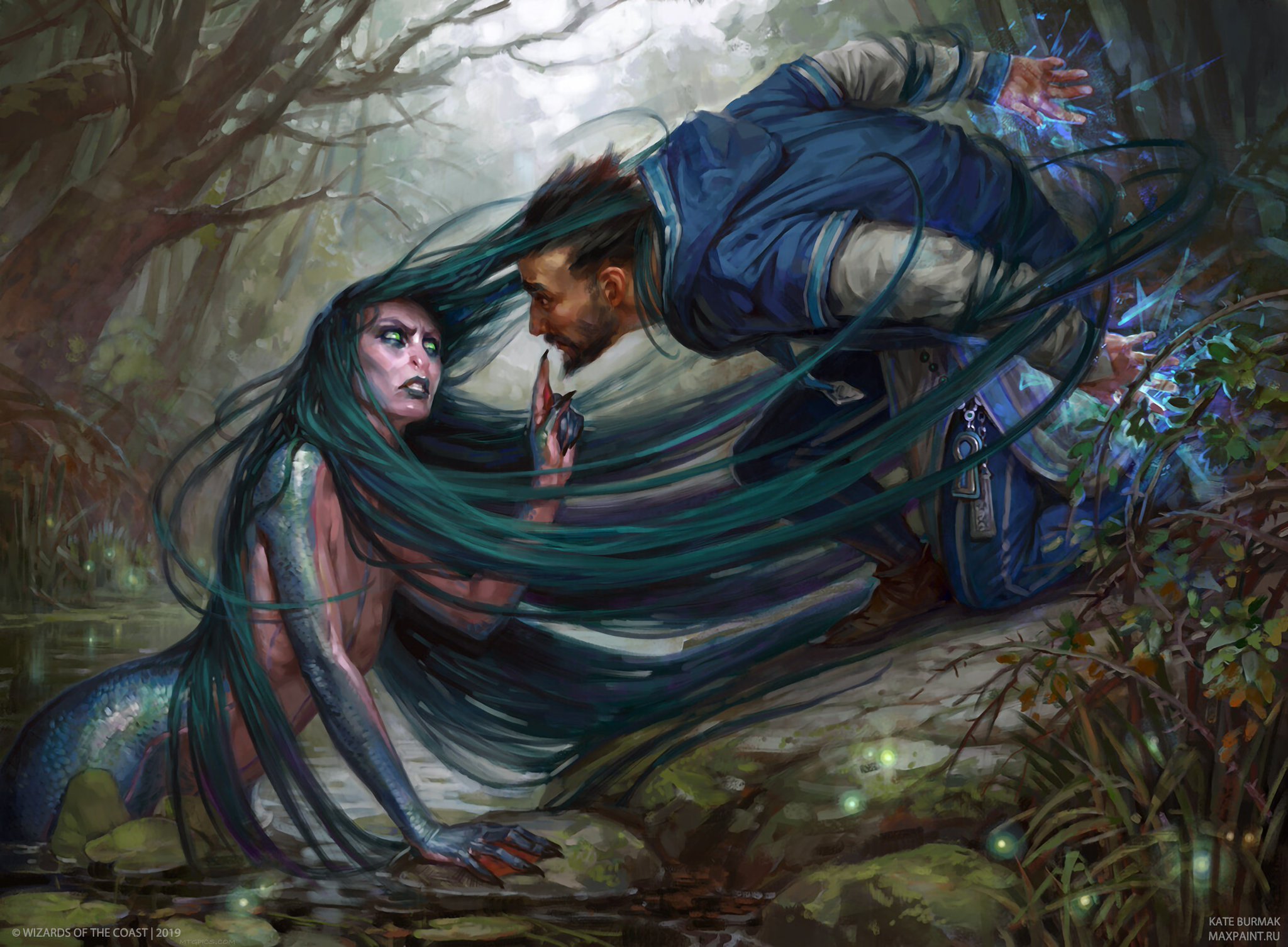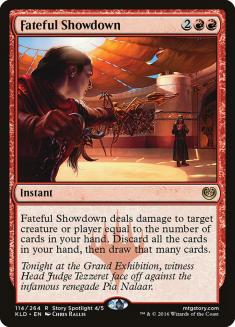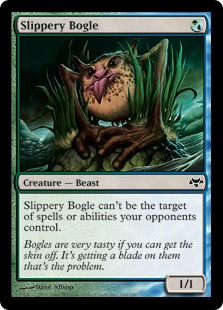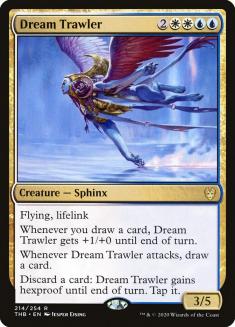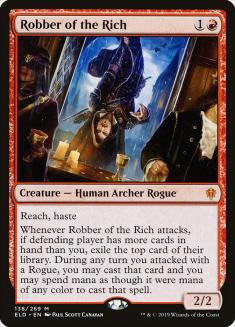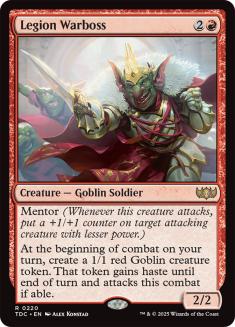The World Championship is the marquee event in the Magic calendar. This weekend was a bigger and better spectacle than anything we’ve seen before – sixteen elite players competing for the largest prize pool in the game’s history against a beautiful Hawaiian backdrop – but also a fantastic learning opportunity for the rest of us who aspire to be on their level some day. Identifying the useful lessons here is the first step on that path.
These small, selective tournaments present a different challenge from the large, open events that are most people’s experience of high-level play. For an SCG Tour Open or Grand Prix, expecting a group of players to register a deck doesn’t drastically alter the incentives behind your own deck choice. If you respect that strategy and its pilots you might place a higher priority on beating it, expecting it to be a larger part of the winner’s metagame, but a handful of players in a room of hundreds can only move the needle so far.
In a field of sixteen, just two or three players agreeing on a deck has a massive impact. If one archetype is expected to have a large share of the metagame, every competitor is forced to react – some by building that deck to beat the mirror, some by loading up on effective sideboard cards, and others by making bold deck choices that would be hard to justify otherwise.
Previous SCG Players’ Championships and World Championships have featured highly skewed metagames rewarding those who were able to make these educated and lucky guesses. Jeskai Fires, the most popular deck at the Mythic Championship just a few days before, was nowhere to be found at the Players’ Championship last December. This weekend, Jeskai Fires rose from the ashes to take World Championship XXVI by surprise; Paulo Vitor Damo da Rosa winning Azorius Control list was clearly built with control mirrors and Temur Reclamation in mind and those adaptations happened to serve him well against Jeskai Fires even though it was on nobody’s radar.
This suggests the usual caveat that these lists have to be understood in that unique context. The list that won World Championship XXVI may be worse for a local tournament than stock lists from less prestigious events weeks ago. However, we’d also expect the lists that emerge from the crucible of World Championship testing to be more generally sound. Distinguishing between long-lasting improvements and a wise choice for one week is an important skill for processing these results and making your own attempts to stay on top of changing metagames.
These unconventional deck choices are more common in larger formats. Though Pioneer has still to appear on this smallest yet biggest stage, Modern has been a fixture of these events for years and always features wild cards. Even the strongest “best decks” in Modern relative to their particular formats gain less traction than historically dominant Standard decks – there were zero copies of Amulet Bloom at both the World Championship and the Players’ Championship at the height of its power while Birthing Pod was completely absent from its first World Championshp as the best deck. This is generally true in Modern but it’s notable that this trend continues even among elite players at this highest level of competition.
When there is a well-defined metagame, Modern offers a wide range of fringe strategies to attack it: Reid Duke found redemption at Worlds in 2013 by attaching Daybreak Coronet to Slippery Bogle in a room full of Jeskai Control, while a young Oliver Tiu secured a spot in the Top 4 of Worlds in 2016 by cleaving through Thoughtseizes and Tarmogoyfs with TitanShift. It’s notoriously difficult to account for the vast range of possible decks in Modern and many of them defying easy categorization: Burn and Humans are both “aggressive” decks but few cards are good against both. Modern is diverse enough that a group of skilled players trying to outlevel each other will produce a picture of the format that may be hardly recognizable.
A very different dynamic is at work in Standard. Despite the lack of high-profile Standard tournaments, the pillars of the format were known heading into World Championship XXVI. Every viewer and most competitors called Azorius Control, Temur Reclamation, and Mono-Red Aggro as the most popular decks. The big blindside of the event, Jeskai Fires, was a known quantity – everyone knew it existed but not whether it could keep pace with a format turbo-charged by Theros Beyond Death after gaining little itself.
Other possible aces in the hole were already in the spotlight: two early “best deck” candidates in Simic Ramp and Jund Sacrifice had not stood the test of time but could be resurrected by a smart deckbuilder. These were largely covered by popular sideboard cards that are strong and versatile: you aren’t expecting to play against Simic Ramp but, if you do, the Aether Gusts that were always in your sideboard will do good work. Standard’s smaller card pool makes it hard for a strategy to come completely out of left field; any new deck has to be fundamentally strong enough to compete with the top dogs and resilient enough to fight through the interaction that’s incidentally good against it.
Card choices in the World Championship decklists are made with these targets in mind. While the format will change as a result of World Championship XXVI – Cavalier of Flame is back in a big way – their priorities should be yours too.
Creatures (4)
Planeswalkers (8)
Lands (25)
Spells (23)

Azorius Control won every major Standard tournament before World Championship XXVI and has now won the most important Standard tournament of all. Previous iterations championed by Corey Baumeister and SCG Points leader Zach Allen display a deckbuilding philosophy that has characterized control decks in modern Magic, using cheap reactive cards as a bridge to expensive sorcery-speed haymakers like Elspeth Conquers Death and Dream Trawler. These lists lean heavily on Narset, Parter of Veils as both a card advantage engine and a cheaper threat that defines the game against other blue decks. Thoralf Severin put his faith in this setup for the biggest tournament of his career.
Creatures (2)
Planeswalkers (6)
Lands (25)
Spells (27)

Paulo Vitor Damo da Rosa and Ondrej Strasky list is an homage to the control decks of old that dictate the pacing of the game by playing mostly at instant speed. Thirst for Meaning is less powerful than Narset in the abstract but is an easier fit in this list, avoiding the awkward tension between deploying Narset and holding up interaction. Dovin’s Veto and Mystical Dispute join the maindeck counterspell suite again as a nod to the mirror and Temur Reclamation but Paulo’s list has nine total counterspells to Severin’s seven. While it’s unfair to call these situational when they are excellent against a large section of the format and can still function against the rest, it’s easier to justify this quantity of them when Thirst can cash them in.
Thirst is also subtly powerful with Shatter the Sky: digging for Shatter with Narset leads to a dead Narset and a face-up Shatter that allows the opponent to minimize their exposure to it whereas Thirst can disguise the presence of Shatter while looking for a copy or the crucial fourth land to cast it. It also facilitates a valuable play pattern for Azorius Control: holding up mana forces the opponent to choose between leading with their weaker threats to draw out counters, giving a weaker draw time to improve with a card like Thirst, or running their stronger threats into a possible Shatter the Sky or Elspeth Conquers Death. When untapped mana represents a wide range of possible plays, even World Championship-caliber players will struggle to play around or into everything with the optimal frequency. Castles Vantress and Ardenvale – as good in control mirrors today as Kjeldoran Outpost was 25 years ago – push this further at zero cost.
This greater emphasis on cheap instants is a mark against Dream Trawler, which operates here as a one-of that gives the deck inevitability a la Aetherling. The card does little more than make Shatter the Sky relevant in the mirror while falling prey to maindeck Mystical Dispute and fighting over it against Temur Reclamation simply gives them a window to stick their namesake enchantment. The text of Dream Trawler is obviously good against Mono-Red but it’s hard to land it in time unless the game is already under control and it’s unlikely to stabilize the battlefield on that turn in the face of Torbran, Thane of Red Fell; Anax, Hardened in the Forge; and Embercleave. Pivoting to Trawler in post-sideboard games is still a valuable tactic but Damo da Rosa and Strasky can do that more efficiently with Archon of Sun’s Grace, an early focus of Azorius Control that is now enjoying its time in the sun again.
These changes seem to worsen an already shaky matchup against Mono-Red, tied for most popular deck in the tournament. While Game 1 is certainly worse, this maindeck configuration opens up sideboard slots that would otherwise go to more copies of Veto and Dispute. A full clip of Aether Gust, more Archons, and Cerulean Drake allow Paulo to present a deck that can keep up with Mono-Red even on the draw. Devout Decree and additional Glass Caskets can join the mix if basic Mountain remains popular post-World Championship.
The importance of building a maindeck and sideboard as a cohesive whole was clear in Sunday’s most important matchup: Azorius Control versus Jeskai Fires.
Creatures (18)
- 4 Sphinx of Foresight
- 4 Cavalier of Flame
- 3 Kenrith, the Returned King
- 4 Bonecrusher Giant
- 3 Brazen Borrower
Planeswalkers (4)
Lands (28)
Spells (10)

Creatures (19)
- 4 Sphinx of Foresight
- 4 Cavalier of Flame
- 2 Cavalier of Gales
- 3 Kenrith, the Returned King
- 4 Bonecrusher Giant
- 2 Dream Trawler
Planeswalkers (4)
Lands (27)
Spells (10)

Paulo’s maindeck is perfectly suited to beating Jeskai Fires. Counterspells are excellent against a deck hoping to resolve expensive, sorcery-speed threats; Teferi, Time Raveler is a threat in its own right but Paulo’s list boasts five combined Veto plus Dispute that can handle Teferi on the draw. Azorius Control can beat Jeskai Fires at its own game with Elspeth Conquers Death lining up well against Cavaliers and Kenrith, the Returned King; Narset, Parter of Veils neutering Cavaliers; and greater access to card draw and selection allowing it to trade off its cards at its direction.
This is a losing battle for Jeskai Fires players, so why not fight a different one? Robber of the Rich for Nassif and Legion Warboss for Carvalho offer cheap threats that dodge Dispute and Veto while making Fires’s own Disputes stronger as they force Azorius Control to react more quickly and with less freedom to choose how and when it fights its battles. The Bonecrusher Giants – and Nassif’s Brazen Borrowers – in the maindeck support this plan, applying pressure to planeswalkers or life totals as necessary. Jeskai Fires can now aim to present a powerful threat on every turn of the game; if Azorius Control has to take its shields down to answer one, another is waiting in the wings.
Paulo’s sideboarding plan shows an awareness of this and decides to beat Jeskai Fires at its new game. Even though his strength in Game 1 comes from his reactive cards, he shaves his clunky Absorbs and leans into Archon of Sun’s Grace as a way to stymie Fires’s aggro-control plan, provide blockers for explosive Cavalier of Flame turns, and close the game quickly while forcing Fires to play into the Disputes that do stay in the deck. Aether Gust can delay Fires of Invention or Cavalier of Flame but also trips up a Robber or Warboss that threatens to steal the game before it’s really begun. Notably, Jeskai Fires’s attempt to shift gears like this is much worse on the draw and this is often a fatal blow for a deck that is far behind in Game 1 and can only be on the play in one post-sideboard game.
This tournament was a showcase of Magic’s history in many ways and that includes the power of these transformational sideboards. Pivoting to creatures to sidestep narrow reactive cards in control mirrors is a tactic as old as time but it has proved to be the key to success in this Standard format. As further proof, just look at its third pillar:
Creatures (9)
Lands (27)
Spells (24)
- 2 Opt
- 4 Expansion
- 4 Growth Spiral
- 4 Wilderness Reclamation
- 1 Scorching Dragonfire
- 2 Omen of the Sea
- 3 Storm's Wrath
- 4 Thassa's Intervention
Sideboard

After Nightpack Ambusher filled this role to great effect at SCG Richmond, Robber and Warboss join it and Shifting Ceratops as other ways to not be a Wilderness Reclamation deck. Brad Nelson is right to highlight the flaws in an all-in Reclamation strategy – the key to keeping Temur Reclamation viable is to find the best way to shift gears. The Mono-Red matchup, always close, is much harder against solid players who aren’t encumbered by dead weight like Shock:
Creatures (31)
- 4 Runaway Steam-Kin
- 4 Scorch Spitter
- 4 Robber of the Rich
- 4 Fervent Champion
- 4 Bonecrusher Giant
- 3 Torbran, Thane of Red Fell
- 4 Rimrock Knight
- 4 Anax, Hardened in the Forge
Lands (22)
Spells (7)

Cutting Shock – as all but one Mono-Red list from the World Championship did – is an odd move on the surface: it’s not an impressive card but it fills a seemingly all-important role. Aggressive red decks in some past formats would never entertain the idea of cutting Shock. Why is this different?
The main reason is that burn spells enable and improve each other. If Lightning Strike were legal it would be harder to find room for Shock but more appealing to do so as dealing the final few points of damage outside of combat would be easier. Red decks need a way to finish the game once combat is no longer an option but one Shock is rarely enough. Luckily, this red deck stays relevant in combat for much longer.
Torbran, Thane of Red Fell means that larger creatures are tougher to block and a swarm of smaller creatures connects for meaningful amounts of damage. Anax, Hardened in the Forge is reliably larger than any opposing creature and offers important insurance against Deafening Clarion and Shatter the Sky. Embercleave makes combat a nightmare to navigate and is the only card in the format that can win the game from most losing positions. Crucially, these cards are all much stronger with permanent damage sources in the form of cheap creatures. Compare and contrast this red deck with a format-defining, trophy-winning red deck from recent memory:
Creatures (18)
- 3 Firedrinker Satyr
- 4 Monastery Swiftspear
- 4 Lightning Berserker
- 3 Zurgo Bellstriker
- 4 Abbot of Keral Keep
Lands (21)
- 21 Mountain
Spells (21)
Sideboard

The only spell in Manfield’s deck that isn’t a permanent is Light Up the Stage, which is sure to find spells that are. Larsson’s list features twenty noncreature spells that deal direct damage and his Shock equivalent – Wild Slash – is an integral part of that package. His deck shrugs off blockers and sweepers more easily but has a much harder time with traditional anti-red cards like lifegain effects.
The metagame breakdown suggests a conditional reason for the lack of Shock: it’s only effective in the mirror, which is reasonably popular but not overly so, and weak against all of the blue decks. This logic is a little self-defeating – if you think Mono-Red is the best deck to play, won’t enough other players come to that conclusion that Shock starts to look good again? – but you can view cutting Shock as a gambit akin to maindecking Mystical Dispute that is correct for some tournaments but not others. Unfortunately, switching up the counterspells in Azorius Control is easier than making the structural changes needed for Shock to be a strong choice in Mono-Red. A different creature base or a greater focus on sideboard cards like Redcap Melee and Experimental Frenzy allows a red deck to claw back that equity in the mirror while remaining more solid overall.
Watching World Championship XXVI was a treat for competitive Magic players: excellent and exciting gameplay between players at the top of their game – and the game. Knowing how to learn the right lessons from it makes the experience even richer.

